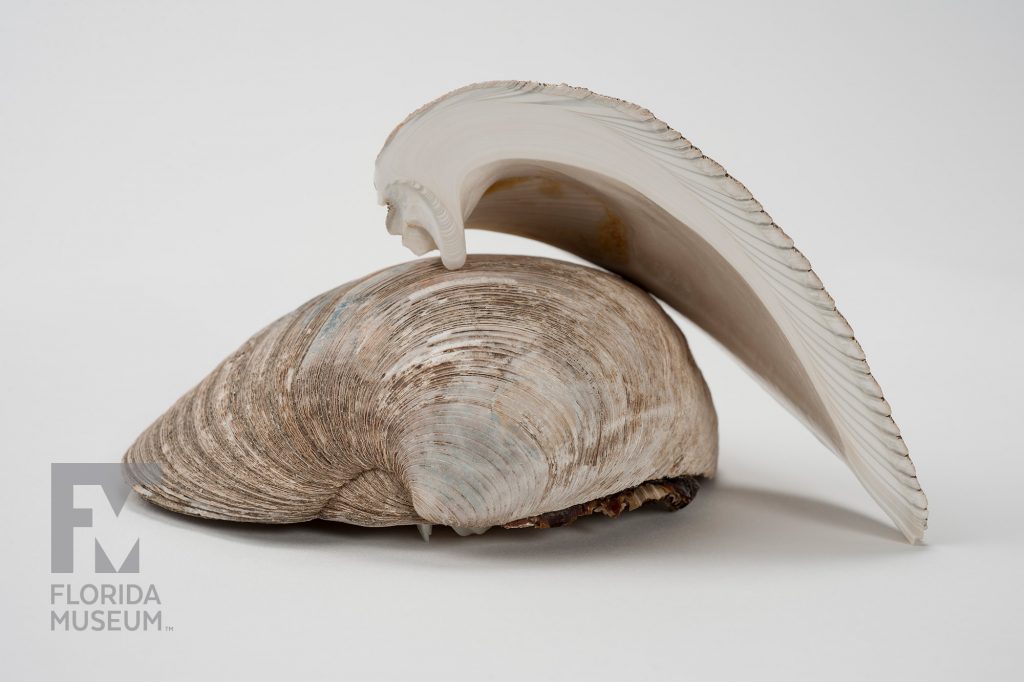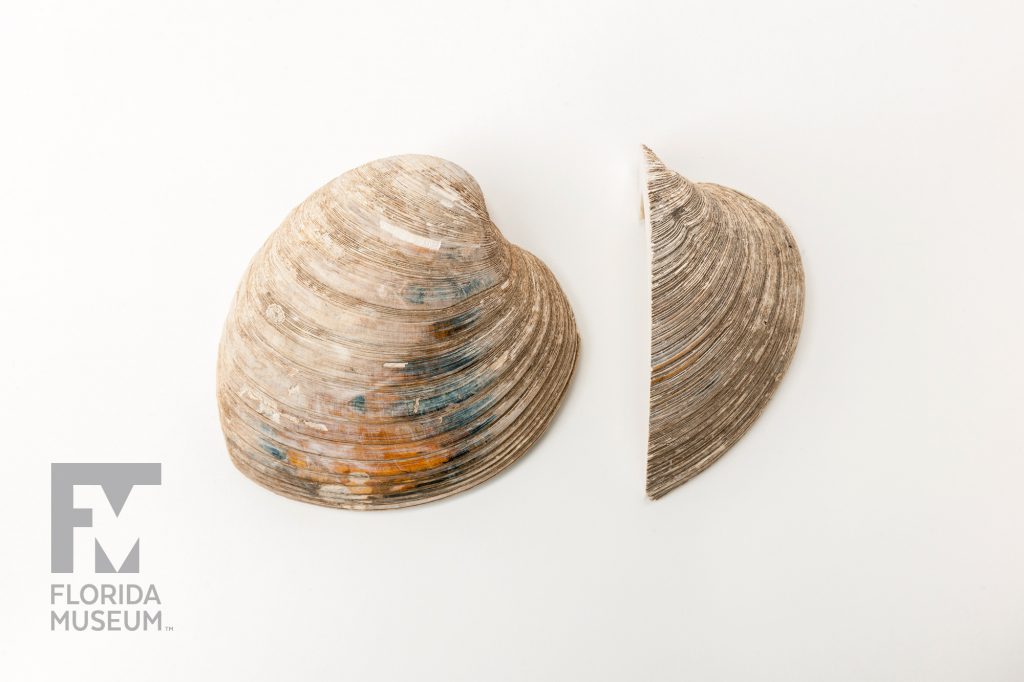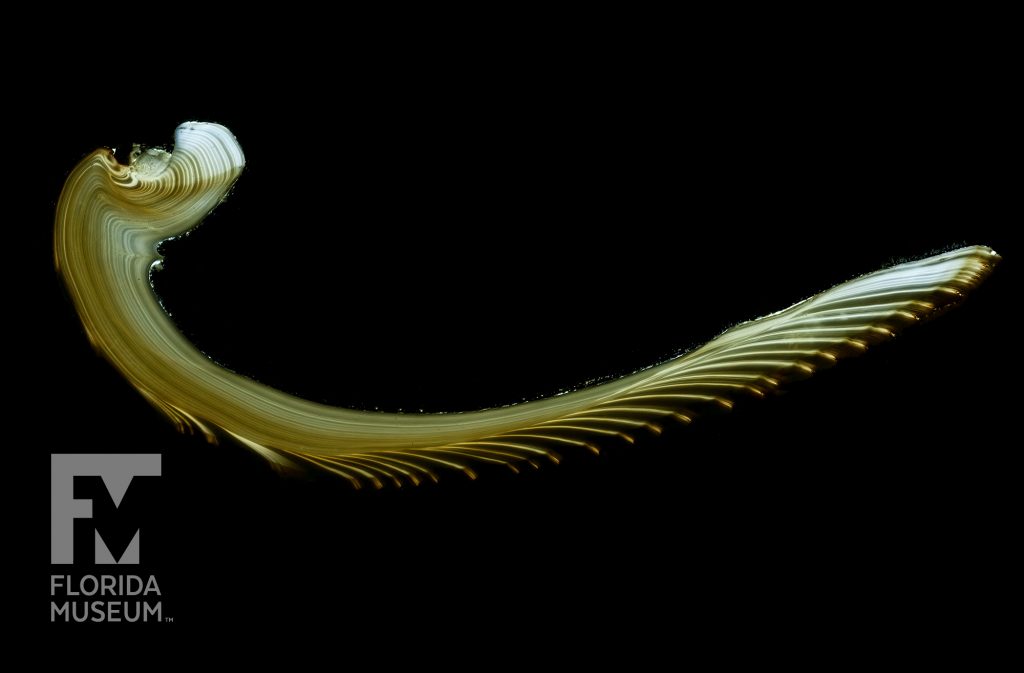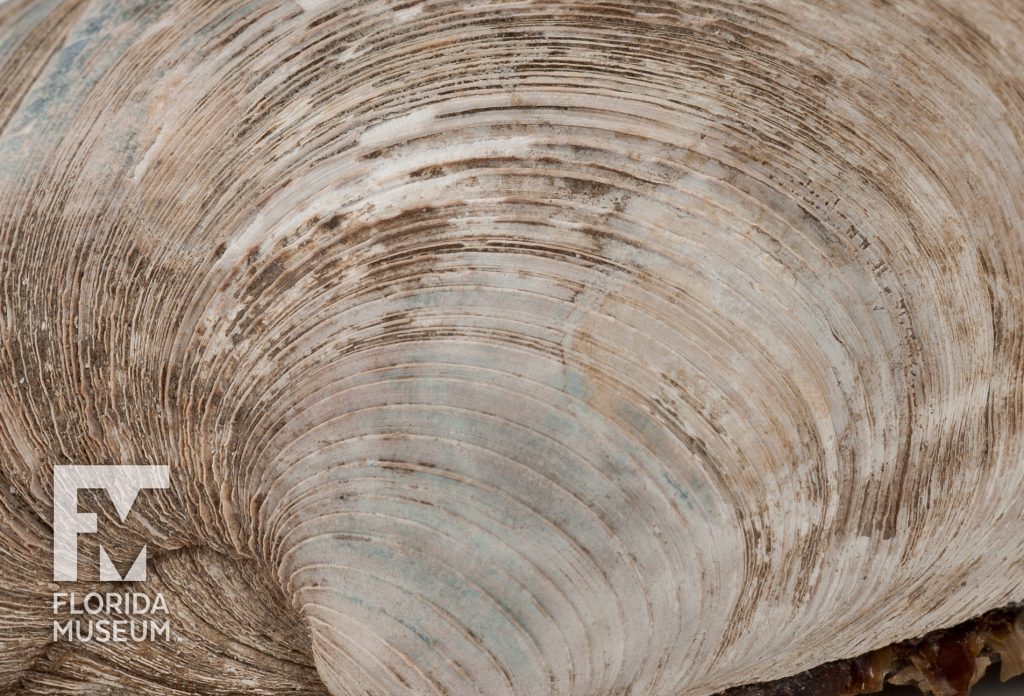Clam shells form yearly growth rings that record changes in the marine environment during the life of the animal. This specimen preserves 32 years of water temperature data from the eastern Gulf Coast, used in past and present climate studies.
Summary
Cross-section of Hard Clam (Mercenaria campechiensis)
From Levy Co., Florida, 1987–88
Collection
Story
Almost everybody has looked at a tree stump or a freshly cut log and noticed the rings. These rings are formed one per year and by counting the number of rings you can determine the age of the tree. And then you’ll notice that some rings are wider or narrower than others and those tell you that some years were better or worse than others for the growth of the tree. That’s called dendrochronology.
What people don’t typically appreciate is that creatures that form shells or skeletons in the oceans also form annual rings and the study of those annual increments is called sclerochronology: sclero for hard tissue, chronology from time.
This is a section of a clamshell collected at Cedar Key, Florida, from Mercenaria campechianus. It’s a cross section that reveals the outer shell layer and the annual rings recorded therein. By counting those annual rings you can determine how long this clamshell lived and by looking at the thin versus the thick layers and counting back from when the clam died you can determine that some years were better than others.
Our challenge as scientists is to figure out why some years are better and why some years are worse for clam growth because we think that tells us something very important about the marine environment.
Doug Jones
Director*
Curator, Invertebrate Paleontology*
Florida Museum of Natural History
Additional Information
- Read: Shedding light on ancient climate change
- Read: Sclerochronology: Playing back the recordings of life
Exhibit
On display Sept. 23, 2017-Jan. 7, 2018, Rare, Beautiful & Fascinating: 100 Years @FloridaMuseum celebrated the Museum’s rich history. Each Museum collection was asked to contribute its most interesting items and share the stories that make them special. Though the physical exhibit is closed, this companion website remains online, providing an opportunity to experience the Florida Museum’s most treasured specimens.
Exhibit Area: Objects Tell Stories
Theme: Changing Climate
 Want to see more? Explore more than 300 breathtaking color photos of plants, animals, fossils and cultural heritage materials from the Florida Museum of Natural History’s collections in the award-winning book All Things Beautiful available from the University Press of Florida.
Want to see more? Explore more than 300 breathtaking color photos of plants, animals, fossils and cultural heritage materials from the Florida Museum of Natural History’s collections in the award-winning book All Things Beautiful available from the University Press of Florida.
*This title was accurate at the time the exhibit was on display in 2017. Please visit the collection website to verify current staff and student information.



